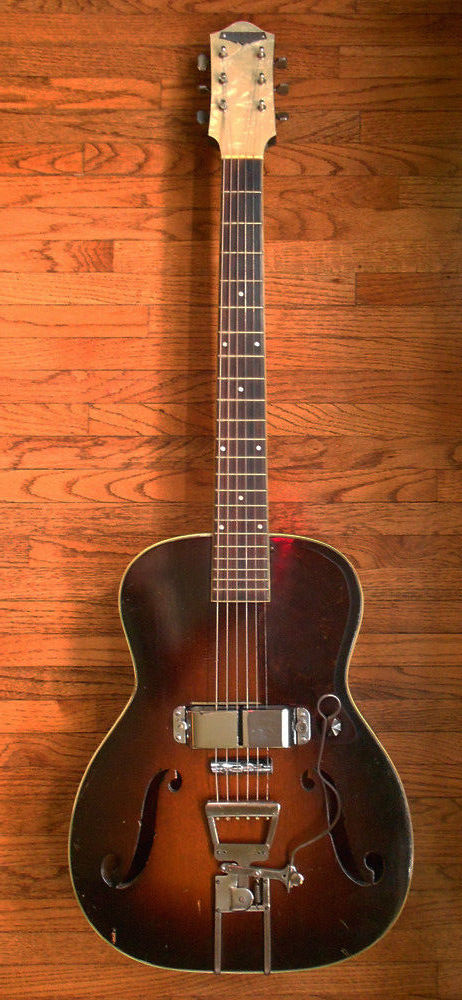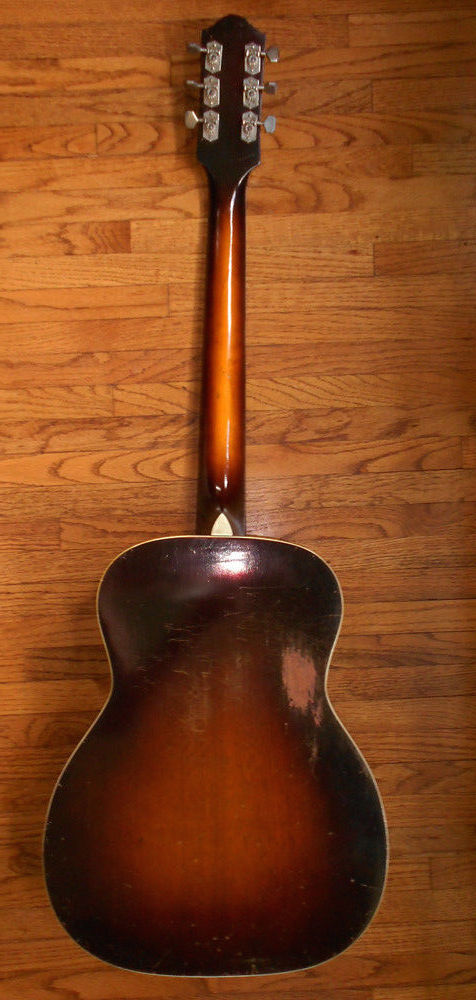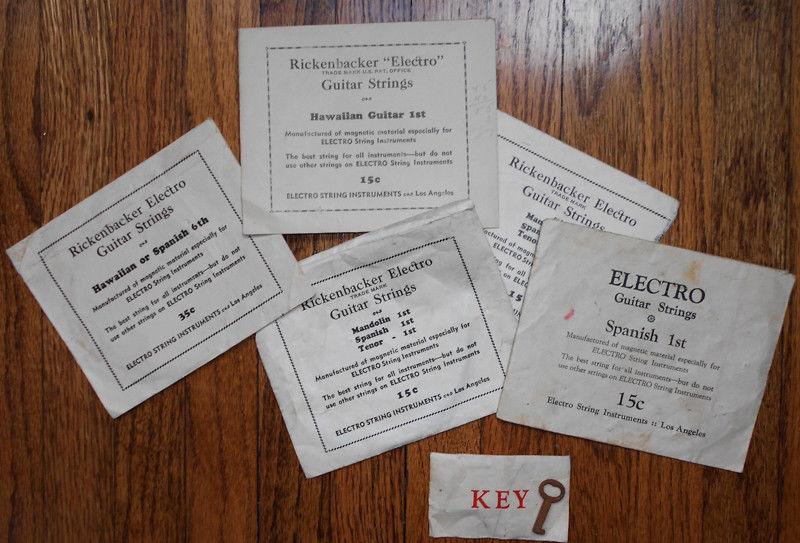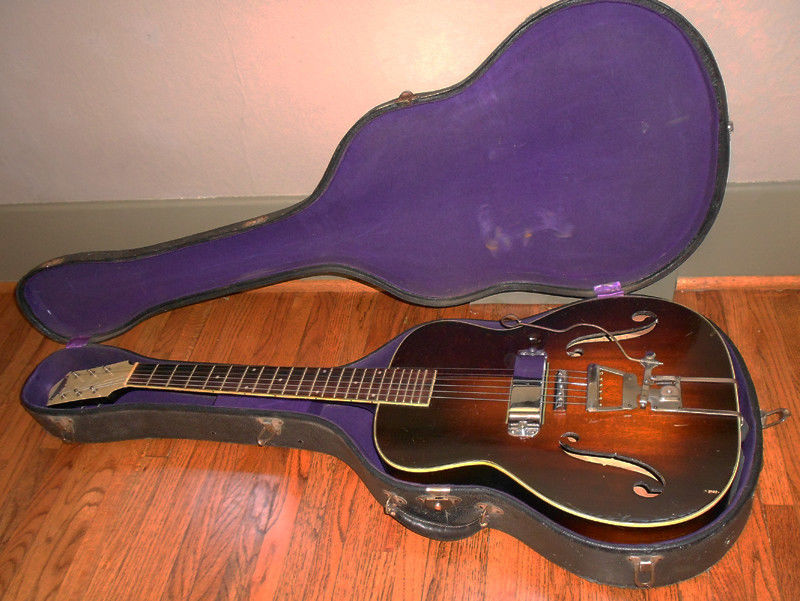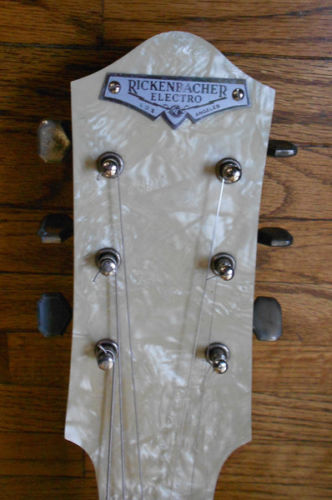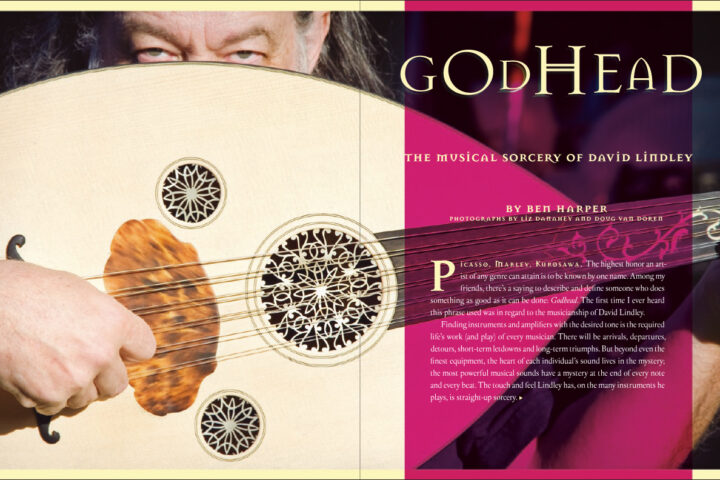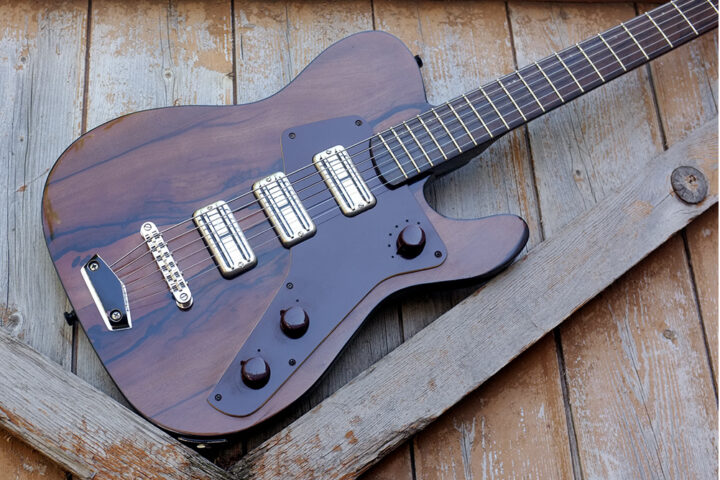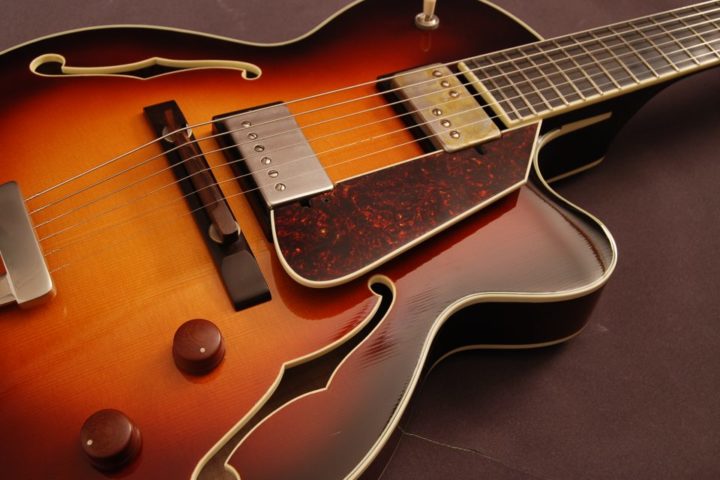1935 Rickenbacher Ken Roberts Electro-Spanish
I don’t think I’m exaggerating when I say that the history of Southern California guitar makers is an unholy rat’s nest of confusion. Take this Rickenbacher Ken Roberts model, for example. I’m not going to go into all of its story, but in one way or another it involves National, Rickenbacker, Dobro, Fender, Harmony and Mosrite. To start the confusion, the name on the headstock reads Rickenbacher, although Adolph Rickenbacker had changed the spelling of his name a few years before this guitar was made. Perhaps he was a frugal man and wanted to use up the metal nameplates he had with the old spelling, but who knows? And then there is Ken Roberts, the man for whom the guitar is named. I can’t find out any info apart from the fact he was a Los Angeles based studio musician and a friend of George Beauchamp, the gentleman who inspired Rickenbacker to start making electric guitars. George Beauchamp was a vaudeville performer and steel guitarist who was always on the lookout for a louder guitar. He, along with the Dopera brothers and Paul Barth, was one of the founding partners of National guitars, although how much he had to do with the actual development of the resophonic guitar is still debated.
Adolph Rickenbacker was the tool and die maker that National hired to manufacture the forms and stamps to make their metal bodies and resonator cones. While at National, Paul Barth and Beauchamp developed an electric guitar, but were unable to manufacture it. (The reasons were very convoluted and had to do with Beauchamp’s stormy relationship with some of the Dopera brothers. I explained some of the trouble here.) In 1931, or thereabouts, Barth and Beauchamp approached Rickenbacker about building their new instrument, which he agreed to do and they all formed a company called Ro-Pat-In to manufacture the new electric guitar. The first electric Rickenbachers were made of aluminum and were designed for playing Hawaiian style but they quickly developed a model that could be played Spanish-style, or what we now think of as the standard way of playing. Rather than build the wooden bodies for the Spanish-style guitars themselves, they contracted with Harmony, who came up with this design that had 17 frets clear of the body. The guitar was fitted with a vibrato unit that was designed by Doc Kaufman, who later went into business with Leo Fender. (You can read about the Kaufman and Fender partnership here.) And of course the guitar featured the pickup with the giant horseshoe magnet, which is still one of the best sounding pickups ever made. This particular guitar is in great shape, which is rare for this model. It is currently listed on eBay and it has a Buy It Now price of $7500.
Click here for the original listing
